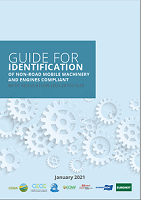Robotics News

June 2018
Digitalisation Creates Jobs but Needs Targeted Support
Digital transformation is creating more jobs than it is destroying, but still poses many challenges for establishments and workers alike. The diffusion of digital technologies in German businesses has created more employment overall, but has led to other changes, most significantly in the employment structure. To ensure that the German economy remains competitive in this arena, the government needs to take action.
Dr. Melanie Arntz, Dr. Terry Gregory and Dr. Ulrich Zierahn of the Centre for European Economic Research (ZEW), in a study funded by the German Federal Ministry of Education and Research looked at “Digitalisation and the Future of Work”. Using the results of a survey on the implementation of digital technologies in German firms as well as a model-based estimation of the relevant macroeconomic mechanisms at play, the project aimed to investigate the ways in which overall employment, unemployment and wages are responding to digitalisation in Germany. According to their findings, around half of German establishments are already using technologies characteristic of “Industry 4.0”. Accordingly, many have already combined traditional industrial production techniques with modern information and communication technologies.
Recent investments in these new technologies have led to a one per cent increase in employment levels between 2011 and 2016, which is equivalent to an increase of 0.2 per cent each year. Primarily jobs that involve routine tasks are starting to dwindle in significance as a result of digital processes, while analytical jobs such as software development or programming and interactive jobs such as medicine and dentistry are experiencing considerable growth.
“Establishments that invested heavily in modern digital technologies early on are still among the leaders in their industry, while those who came late to the party are noticeably falling behind. This divide needs to be tackled in a targeted way,” explains Melanie Arntz. Their findings also showed that investment in digital technologies are a contributing factor in rising wage inequality. “High-wage professions and sectors are the ones that are profiting the most from new technologies in the form of higher employment and wage increases, while low-paid jobs and sectors, on average, are losing out,” says Melanie Arntz. According to the project report, this trend is set to continue over the next five years.
The real challenge posed by digitalisation and “Industry 4.0”, according to the researchers, is preparing workers for the labour market of the future and in so doing improving every individual’s chance to benefit from digital transformation by moving into developing sectors and professions. This could help to counteract the shortages of skilled workers in professions requiring interpersonal or analytical skills, for example. The possibility for workers to move between professions and sectors should therefore be encouraged. “Worker mobility helps to reduce skills shortages in growing sectors and to confine the worsening labour market prospects for workers in shrinking professions and sectors,” explains Melanie Arntz.
Key outcomes:
- Slow and low level of adoption of 4.0 technologies in industry. But improvements in the past 5 and the coming 5 years are significant.
- German firms are split in half: one half is already using the technology, while the other half do not use it at all or just have started the adoption.
- The overall effect on employment is weakly positive. There was a significant substitution effect on employment (some technologies have substituted human labour), but overall were covered by a higher product demand and a thereby induced higher employment. This also was accompanied by rising wages.
- The small net effect was accompanied by a massive structural impact: manual and cognitive routine jobs as well as manual non-routine jobs have been replaced by more analytical and interactive jobs. The use of new technologies has increased the competitiveness of firms. This trend will continue between 2016 and 2021. This trend can also be observed between different sectors.
- There is an increasing inequality: employment and wages polarisation. High-wage jobs and sectors do and will see an increase, while middle-wage jobs rather decline.
- Investments in Industry 4.0 technologies requires appropriately skilled staff to apply them. This will lead to a further increase of labour demand in the medium term.
Policy implications:
- Foster the use of new technologies: framework conditions (data protection legislation, broadband deployment) and information campaigns could support the efforts
- Addressing skilled-labour shortage: growth potential of new technology depends on availability of appropriately skilled labour.
- Foster higher labour mobility between sectors
Quicklinks
EUnited AISBL- European Engineering Industries Association,
Industrious Brussels EU District, Avenue des Arts 6-9, 1210 Brussels, Belgium, +32 490 57 57 65
Transparency Register number: 0289344948-82
Industrious Brussels EU District, Avenue des Arts 6-9, 1210 Brussels, Belgium, +32 490 57 57 65
Transparency Register number: 0289344948-82
© 2025 Eunited aisbl, Bruxelles














































































































